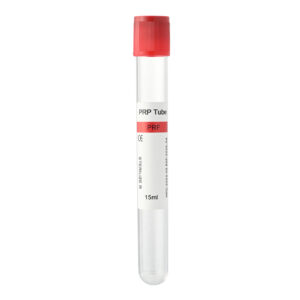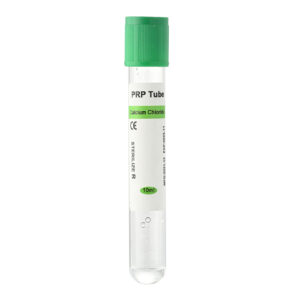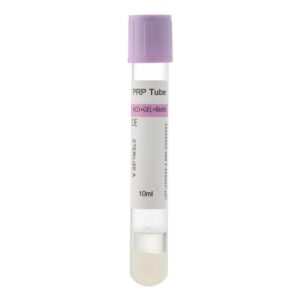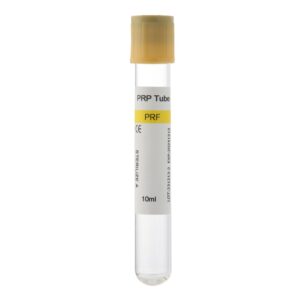How to Treat Androgenetic Alopecia with PRP Therapy? Androgenetic alopecia (AGA), also known as male pattern baldness, is a common type of hair loss affecting millions of men and women worldwide. Faced with this condition, modern medicine offers various treatments. PRP (Platelet-Rich Plasma) therapy stands out for its natural, safe, and effective characteristics, becoming an increasingly popular choice for patients.
What is PRP?
PRP, or Platelet-Rich Plasma, is a treatment method that extracts and concentrates platelets from a patient’s blood. Platelets not only play an essential role in blood clotting but also contain numerous growth factors and cytokines that can promote tissue repair and regeneration.

What is Androgenetic Alopecia?
Androgenetic alopecia is a progressive hair loss condition caused by genetic and androgenic factors (such as testosterone and its derivative dihydrotestosterone, DHT) affecting hair follicles. This hair loss occurs in both men and women but manifests slightly differently. Men typically experience a receding hairline and thinning at the crown, while women generally see thinning hair across the top of the scalp. This condition can begin in the teens, twenties, or thirties and may become more pronounced with age.
Treatment of PRP
- Stimulating Hair Follicle Regeneration: Growth factors in PRP can stimulate hair follicle cell proliferation, extend the hair growth phase, and promote new hair generation.
- Improving Blood Circulation: Injected PRP helps enhance blood circulation in the scalp, providing more oxygen and nutrients to hair follicles.
- Reducing Inflammation: The anti-inflammatory properties of PRP help reduce scalp inflammation, creating a healthier environment for hair follicles.
Preparing for PRP Treatment
- Discontinue Certain Medications: At least a week before treatment, stop taking any medications that affect platelet function, such as aspirin and NSAIDs like ibuprofen. Consult your doctor for specific instructions.
- Avoid Alcohol and Tobacco: Refrain from consuming alcohol and smoking 48 hours before the treatment, as these can impact platelet function and blood circulation.
- Maintain a Healthy Diet: In the days leading up to the treatment, maintain a balanced diet and stay hydrated. A nutrient-rich diet helps improve blood quality, enhancing PRP effectiveness.
- Scalp Cleanliness: On the day of treatment, wash your scalp with a gentle shampoo to ensure it is free of oil and dirt. Avoid using styling products.
- Health Assessment: Inform your doctor of any health issues or medications you are currently taking. Certain conditions may require special attention or adjustments to the treatment plan.
The PRP Treatment Process for Androgenetic Alopecia
- Initial Consultation: Start with a detailed consultation with a specialist who will assess your hair loss condition, medical history, and overall health to determine your suitability for PRP treatment.
- Blood Extraction: On the treatment day, the doctor will draw approximately 20-30 ml of blood from your arm, similar to a routine blood test.
- Plasma Separation: The drawn blood is placed in a centrifuge and spun for 10-15 minutes to separate the platelet-rich plasma from other blood components.
- Preparing PRP Injection: The extracted PRP is processed, and the doctor may apply a local anesthetic or numbing cream to minimize discomfort before the injection.
- Injecting PRP: The PRP is injected into the scalp areas affected by hair loss using a fine needle. The doctor will administer multiple injections to ensure even distribution and coverage of all treatment areas.

Post-Treatment Care and Results
Post-Treatment Care:
- Avoid washing your hair for 24 hours after the treatment.
- Avoid sun exposure and strong chemical products on the treated area.
- Refrain from vigorous exercise or scalp massages to prevent PRP from dispersing.
Treatment Results: Most patients notice significant improvements in hair density and thickness after several sessions, typically conducted every 4-6 weeks for 3-4 treatments per cycle.
Long-Term Effects: PRP therapy outcomes vary among individuals, depending on the severity of hair loss and post-treatment care. However, many patients report good hair regrowth, slower hair loss, and overall better hair quality following PRP treatment.
Advantages and Disadvantages of PRP Therapy
Advantages:
- Natural Therapy: Uses the patient’s blood components, eliminating risks of rejection and allergic reactions.
- High Safety: Few side effects, usually only mild discomfort at the injection site.
- Effectiveness: Numerous studies and clinical practices show its effectiveness in stimulating hair follicle regeneration and improving hair density.
- Versatility: Besides treating hair loss, PRP enhances scalp health, reduces inflammation, and improves overall hair quality.
Disadvantages:
- High Cost: Requires specialized equipment and multiple sessions, leading to higher costs.
- Variable Results: Treatment effectiveness varies among individuals, with different responses observed.
- Multiple Treatments Needed: Several sessions are required to achieve and maintain optimal results.
- Time Commitment: Each session takes time, and treatment cycles may span several months to see noticeable improvements.
PRP therapy offers a safe, effective, and natural treatment option for patients with androgenetic alopecia. By utilizing the growth factors in your blood, PRP not only stimulates hair follicle regeneration but also enhances scalp health, supporting long-term hair growth. If you are struggling with androgenetic alopecia, consult a professional to determine if PRP therapy is right for you. With proper treatment and diligent care, androgenetic alopecia patients have a genuine opportunity to regain thick, healthy hair and rebuild their confidence.





